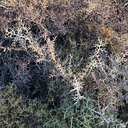Place-making workshop: making Jane Jacobs alive again
In May 2023 as part of Erasmus+ project we were discussing with several urban activists and place-makers, who were sharing their experiences with place-making.
First we discussed with Eva, who approached a family business that had a huge empty space, a slaughterhouse during the week with a big covered market that is filled on Fridays and in the weekends. She suggested using the space for more than just work and to add a socio-cultural layer to it. Together with an architect, they started a project to interact with people while they were there. They built mobile kitchens and began cooking during the market hours underneath the huge covered market, while collecting ideas from the public. This led to the idea of creating a playground for children and their parents. The project received funding and they built Brussels biggest covered playground, using mobile tools.
Eva emphasized the value of the private space as a cultural heritage in an arrival area, frequently visited by a very diverse public, maintained, clean, and safe, which has become the unique selling point of the whole project and serves as an example for the use of public space all around the city.
The importance of working on a space that’s already ‘owned’ by numerous communities (because it’s the place where they can find the cheapest food in the city), helps a lot in finding the most interesting use of the same space in a participative way, when it’s not used by the commercial partner.
Afterwards they started collecting leftover fruits and vegetables from the market to share with those in need and cook with. A whole series of cooking activities with a large diversity of participants was born. Central to the project remained the idea of getting to know each other better and to adapt the space to actual needs from the city and her inhabitants.
Eva emphasized the value of the private space as a cultural heritage, maintained, clean, and safe, which has become the unique selling point of the whole project and serves as an example for the use of public space all around the city.
You can find out more about the organisation as it presents itself today here.
We discussed with Gall, who explained more about the importance of evaluating the extent of improvement needed for public spaces, whether it requires a simple refresh, physical reconstruction, or simply leaving it untouched. Gall: “There is an important balance to keep between acting and non-acting for improving a place”.
For finding this balance one can suggest bringing actors together, including owners and the community, to discuss and plan interventions. One ca also use alternative semi-algorithmic approach to guide community planning in public spaces. Discussing with “Wake up! Cities” participants we mainly talked about the evolution of basic infrastructure and lack of some of the trainings for urban planners for co-creation with citizens (similar to the ones with Bauhaus on older times). Such workshop programs can be become a solid base for trainings to appear in the near future.
Further readings:
CISR https://cisr-berlin.org/wakeupcities
Urbane Praxis (Berlin) https://www.urbanepraxis.berlin/
